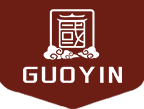01
2025
-
07
How Chinese Suppliers Can Cope with Fluctuating Steel Demand
Facing trade barriers (EU CBAM) and emerging markets, Chinese suppliers should diversify markets, digitalize supply chains (blockchain tracing), and enhance compliance (carbon management). International certifications and agile adaptation are crucial for sustainable growth.
Author:
In recent years, the global steel market has experienced intensified volatility. As the world's largest steel producer and exporter, Chinese suppliers face multiple challenges, including unstable demand and increasing international trade barriers. Maintaining competitiveness in this complex environment has become an urgent issue for China's steel export enterprises.
This article analyzes current steel export trends, examines the impact of international trade barriers, and proposes optimization strategies for cross-border supply chains.
Ⅰ.Steel Export Trends and Market Changes
1.Intensified Demand Fluctuations: Due to uneven global economic recovery, China's steel exports fluctuated by 15% year-on-year in 2023. Traditional markets like Europe and the U.S. showed slower growth, while emerging markets in Southeast Asia and the Middle East became new growth drivers.
2.Product Structure Upgrades: High-end steel products (e.g., electrical steel, automotive sheets) now account for 35% of exports, while profit margins for low-end products continue to shrink.
3.Fierce Price Competition: The annual volatility of international steel price indices exceeds 20%, compounded by rising shipping costs, putting pressure on export profits.
Ⅱ. Key Challenges from International Trade Barriers
1. Frequent Anti-Dumping Investigations: Trade remedy cases targeting Chinese steel increased by 40% in 2023, with the EU Carbon Border Adjustment Mechanism (CBAM) pilot covering steel products.
2. Certification Standard Barriers: Technical requirements such as the EU CE certification and U.S. ASTM standards are becoming stricter, causing some companies to lose orders due to certification gaps.
3. Geopolitical Risks: Some countries advocate "de-risking" supply chains from China, requiring proof of diversified sourcing origins.
Ⅲ. Cross-Border Supply Chain Optimization Strategies
1. Diversified Market Layout:
Establish overseas warehouses along the Belt and Road routes to shorten delivery cycles to the Middle East and ASEAN markets.
Form joint ventures with local distributors to circumvent trade restrictions.
2. Digital Supply Chain Development:
Adopt blockchain for steel traceability to meet ESG compliance requirements.
Use IoT to monitor shipping conditions (e.g., temperature, humidity) and reduce transport damage for high-end steel.
3. Dual Upgrades in Technology and Compliance:
Invest in carbon footprint management systems compliant with EU CBAM requirements.
Obtain internationally recognized certifications (e.g., API/EN10204), boosting premium pricing capability by 20%.
Ⅳ. Conclusion
To navigate market volatility, Chinese suppliers must shift from reactive coping to proactive strategizing. Recommended actions include:
Quarterly updates of "Trade Barrier Early Warning Reports" for key markets.
Participation in International Iron and Steel Institute (IISI) seminars to track regulatory trends.
Strategic partnerships with cross-border logistics providers to build resilient supply chains.
Only by combining short-term adaptability with long-term transformation can Chinese suppliers secure sustainable growth in global competition.
Key words:
Related news


